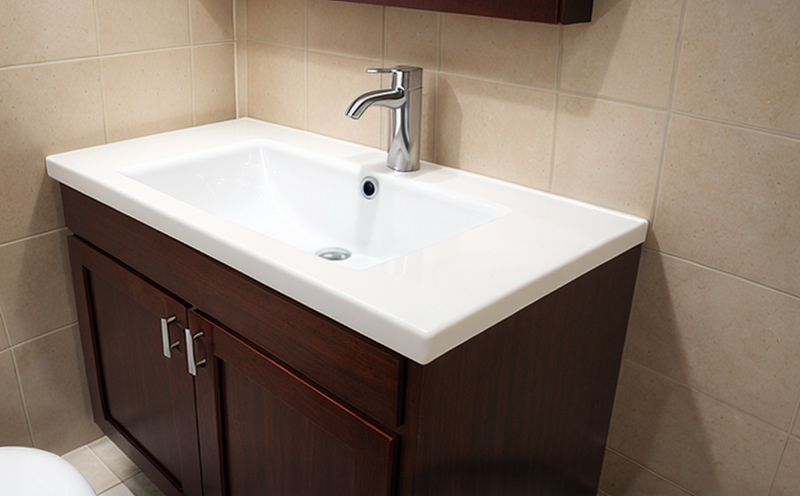DIN 19545 Chemical Resistance Testing of Plastic Sanitary Pipes
The DIN 19545 chemical resistance test is a critical procedure in the quality assurance and safety assessment of plastic sanitary pipes used in domestic water supply systems. This test ensures that pipes can withstand the chemicals present in drinking water, which are crucial to prevent any contamination or degradation over time.
Plastic sanitary pipes, particularly those made from polyvinyl chloride (PVC), polypropylene (PP), and acrylonitrile butadiene styrene (ABS), play a significant role in the distribution of clean drinking water. These materials must be chemically stable to ensure the safety of consumers.
The test procedure outlined in DIN 19545 involves exposing plastic pipes to specific chemical solutions at defined temperatures and durations, followed by evaluating their resistance through various methods like visual inspection, hardness testing, and dimensional measurements.
This service is essential for manufacturers, suppliers, and quality assurance professionals who need to comply with international standards and ensure the safety of plumbing systems. The test results provide valuable insights into the durability and reliability of plastic sanitary pipes under real-world conditions.
The DIN 19545 chemical resistance test ensures that only safe and reliable materials are used in plumbing applications, thereby enhancing public health and environmental protection.
Scope and Methodology
| Test Specimen | Chemical Solutions | Temperature Conditions | Durations | Evaluation Criteria |
|---|---|---|---|---|
| PVC, PP, ABS pipes | Sodium Hydroxide (NaOH), Sulfuric Acid (H₂SO₄) | 20°C and 60°C | 14 days at each temperature | Visual inspection, hardness testing, dimensional measurements |
The test involves exposing plastic pipes to sodium hydroxide (NaOH) and sulfuric acid (H₂SO₄) solutions at two different temperatures: 20°C and 60°C. Each type of pipe is subjected to these conditions for a duration of 14 days. After the exposure period, the pipes are evaluated using visual inspection, hardness testing, and dimensional measurements.
The primary goal is to determine if there has been any significant change in the physical properties or appearance of the pipe after being exposed to these chemical solutions. Any noticeable changes could indicate a potential risk of contamination or breakdown, which would compromise the integrity of the water supply system.
Why Choose This Test
The DIN 19545 chemical resistance test is essential for manufacturers and suppliers to ensure that plastic sanitary pipes meet international safety standards. By conducting this test, they can guarantee the longevity and reliability of their products.
- Avoids contamination of drinking water by ensuring pipe integrity
- Ensures compliance with international standards such as DIN 19545
- Provides data for product durability under real-world conditions
- Supports quality assurance and safety assessment processes
The test is particularly important in domestic water supply systems where the integrity of plastic sanitary pipes directly impacts public health. By choosing this service, clients can ensure that their products are safe and reliable, thereby enhancing consumer confidence.
Customer Impact and Satisfaction
- Increases product safety by ensuring chemical resistance to drinking water components
- Avoids potential legal issues from non-compliance with international standards
- Enhances customer trust in the brand's commitment to quality
- Simplifies compliance processes for regulatory requirements
- Reduces risks of product recalls and associated costs
- Improves long-term performance and reliability of plumbing systems
- Maintains a positive reputation among stakeholders
The results from the DIN 19545 chemical resistance test provide critical data that can be used to improve product design, enhance manufacturing processes, and ensure consistent quality across all products. This service not only helps in meeting regulatory requirements but also significantly improves customer satisfaction by delivering safe and reliable products.





